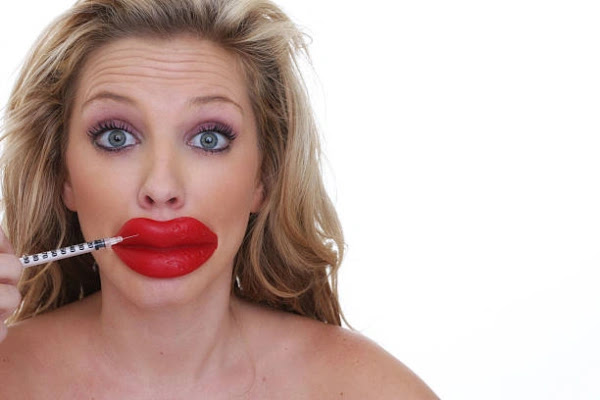Lipstick and the Science
Color Psychology
Introduction:
Lipstick is more than just a cosmetic product; it's a
powerful tool of self-expression that can evoke emotions, convey personality
traits, and influence perceptions. Behind the myriad of lipstick shades lies
the fascinating science of color psychology, which explores how different
colors impact human emotions, behaviors, and perceptions. In this exploration,
we delve into the intersection of lipstick and color psychology, examining how
the choice of lipstick color can influence mood, confidence, and social
interactions.
Understanding Color Psychology:
Color psychology is the study of how colors affect human
behavior and emotions. It explores the psychological and physiological
responses elicited by different colors and examines how these responses
influence perceptions, attitudes, and decision-making processes. Each color
carries its own unique symbolism and conveys specific associations and meanings
based on cultural, societal, and personal experiences.
Red Lipstick: The Power Color
Red lipstick is often associated with passion, confidence,
and sensuality. According to color psychology, red is a stimulating color that
can evoke strong emotions and attract attention. When applied to the lips, red
lipstick can enhance facial features, create a focal point, and exude a sense
of boldness and empowerment. Studies have shown that wearing red lipstick can
boost confidence, increase perceived attractiveness, and even alter behavior.
Moreover, red lipstick has cultural and historical
significance across different societies. In many cultures, red is associated
with luck, prosperity, and celebration, making it a popular choice for special
occasions and festive events. From classic Hollywood starlets to modern-day
icons, red lipstick has remained a timeless symbol of glamour and
sophistication, transcending trends and generations.
Pink Lipstick: The Feminine Hue
Pink lipstick is often associated with femininity, romance,
and youthfulness. According to color psychology, pink is a soothing and
nurturing color that can evoke feelings of warmth, affection, and compassion. When
applied to the lips, pink lipstick can impart a soft and delicate appearance,
enhancing natural beauty and radiating a sense of sweetness and innocence.
Pink lipstick comes in a variety of shades, ranging from
soft pastels to vibrant fuchsias, each carrying its own unique symbolism and
connotations. Lighter shades of pink are often associated with innocence,
purity, and gentleness, while deeper shades can convey sophistication,
playfulness, and confidence. The versatility of pink lipstick makes it a popular
choice for a wide range of occasions, from casual outings to formal events.
Neutral Lipstick: The Versatile Choice
Neutral lipstick, including shades of nude, beige, and
taupe, is prized for its versatility and understated elegance. According to
color psychology, neutral colors are calming and grounding, creating a sense of
balance and harmony. When applied to the lips, neutral lipstick can provide a
subtle enhancement that complements any makeup look and suits a variety of skin
tones.
Neutral lipstick is often favored for its ability to create
a natural and polished appearance, making it a go-to option for everyday wear
and professional settings. Whether it's a nude lip gloss for a fresh and dewy
look or a matte taupe lipstick for a sophisticated finish, neutral lip colors
offer endless possibilities for expression and experimentation.
The Influence of Cultural and Personal Factors:
While color psychology provides insights into the general
associations and meanings of different lipstick colors, it's essential to
consider the influence of cultural and personal factors on individual
perceptions and preferences. Cultural norms, societal trends, and personal
experiences can shape how individuals interpret and respond to lipstick colors,
leading to diverse and subjective reactions.
For example, in some cultures, certain lipstick colors may
carry specific cultural or religious symbolism that differs from Western
interpretations. Additionally, personal preferences, experiences, and
self-perceptions can influence how individuals choose and wear lipstick colors,
reflecting their unique personality traits, mood, and style.
Practical Applications in Marketing and Branding:
The principles of color psychology have practical
applications in marketing and branding within the beauty industry. By
understanding the psychological effects of different colors, lipstick brands
can strategically leverage color to evoke desired emotions, create brand
identity, and influence consumer behavior.
For example, brands may use vibrant reds and bold pinks to
convey confidence, passion, and glamour, appealing to consumers seeking bold
and expressive lip colors. Alternatively, brands may opt for soft neutrals and
muted tones to evoke a sense of sophistication, elegance, and versatility, targeting
consumers seeking understated and timeless beauty options.
Moreover, color plays a crucial role in packaging design,
advertising campaigns, and product presentation, influencing consumer
perceptions and purchase decisions. From eye-catching lipstick tubes adorned
with vibrant hues to minimalist packaging featuring neutral tones, the color
choices made by lipstick brands can shape brand image, convey product
attributes, and resonate with target audiences.
Conclusion:
Lipstick and color psychology intersect in fascinating ways,
with each lipstick color carrying its own unique symbolism, associations, and
psychological effects. From the empowering allure of red lipstick to the
feminine charm of pink lipstick and the versatile elegance of neutral lipstick,
the choice of lipstick color can influence mood, confidence, and social
interactions.
By understanding the principles of color psychology,
lipstick brands can strategically leverage color to create compelling products,
build brand identity, and connect with consumers on an emotional level. Whether
it's bold and vibrant hues or soft and subtle tones, lipstick colors have the
power to evoke emotions, enhance beauty, and express individuality in a myriad
of ways.
